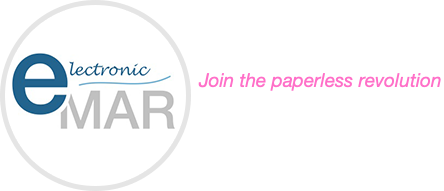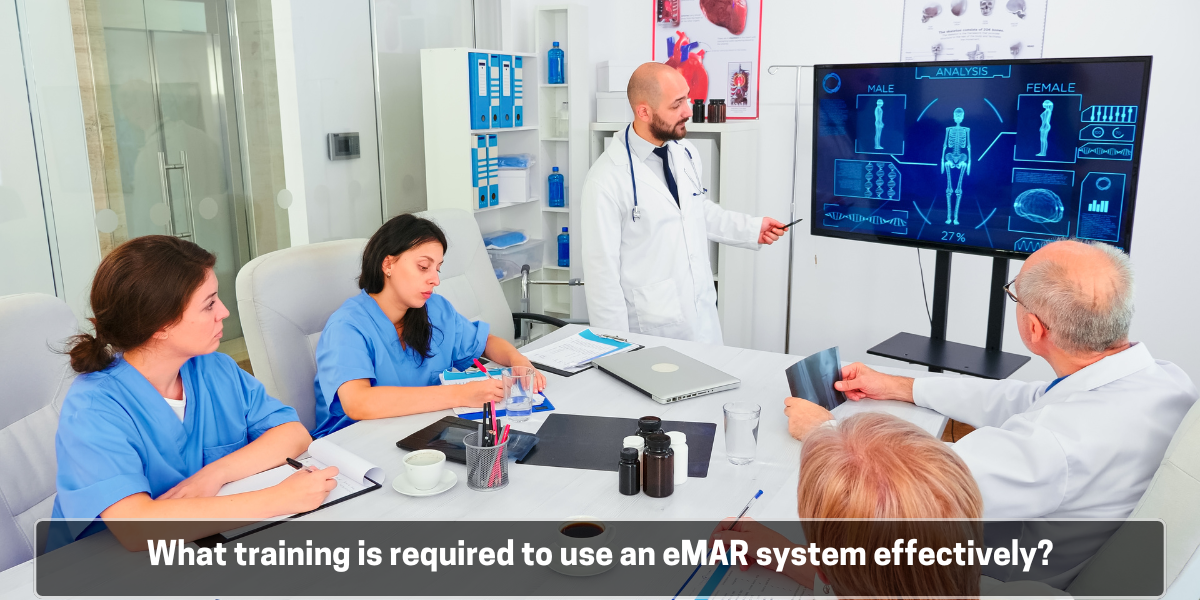Many care homes across the UK have transitioned from paper-based medication records to Electronic Medication Administration Records (eMAR) systems? This digital shift has transformed how medication is tracked and managed in care settings. eMAR systems now stand as the standard in many facilities, offering a faster, more accurate, and more secure method of medication documentation. However, the benefits of eMAR depend heavily on how well staff are trained to use it.
As a care home manager, ensuring your team receives comprehensive training on the eMAR system is one of the most important steps you can take to improve medication safety, regulatory compliance, and overall care quality. Without proper training, even the most advanced eMAR solution can become underused or misapplied, risking errors and inefficiencies. Here, we explore some of the essential areas of eMAR chart training and how they help staff use the system confidently and effectively.
1. Mastering eMAR Navigation and Accurate Data Entry
The starting point for any eMAR training programme is system navigation. Staff must first understand how to securely log in and access patient information. Each user needs to know the importance of keeping login credentials private to protect sensitive data. Training should show staff how to move through the system with ease, locate patient profiles, and find real-time medication schedules.
Beyond navigation, staff must know how to enter and update records correctly. They should learn how to document when medication has been administered, missed, or refused, and how to adjust entries when required. Errors in data entry can compromise patient safety, so building accuracy from the outset is essential.
2. Ensuring Security, Compliance, and Data Protection
eMAR systems contain highly sensitive personal and medical information. All users must understand their role in maintaining confidentiality and following data protection laws, including GDPR. Training should clarify the importance of logging out after use, avoiding shared passwords, and only accessing the system on authorised devices.
Staff must also stay aware of the compliance standards set by regulatory bodies such as the Care Quality Commission (CQC) and the NHS. An effective eMAR nursing chart aligns with these regulations by providing a real-time, traceable log of all medication activities. Training must explain how the system supports these standards and what staff must do to remain compliant.
3. Handling Errors and Troubleshooting with Confidence
Even with the best systems in place, errors and technical issues can occur. Training should prepare staff to respond quickly and appropriately. If a medication dose is missed, wrongly recorded, or refused by a resident, the system must reflect this accurately and promptly.
Training must also cover what to do in the event of a system malfunction, such as login problems or loss of connection. Staff should know basic troubleshooting steps and understand when and how to contact IT support.
4. Understanding Integration with Other Healthcare Tools
Many care homes use multiple digital systems to manage different aspects of resident care. An effective eMAR system should integrate with care planning software, clinical records, and alert systems. Training must help staff understand how to access important information—such as allergies, past diagnoses, and care notes—within the eMAR platform.
Integration creates a more holistic view of each resident’s health, leading to better decision-making and fewer errors. When staff know how to access and interpret this connected information, they can provide more tailored, responsive care.
5. Offering Hands-on Practice for Confidence Building
Theory alone is not enough. The most effective eMAR training includes hands-on, practical experience. Staff should practise real-world scenarios in a controlled environment. This includes tasks such as administering scheduled doses, handling missed doses, and editing medication entries. These exercises help build confidence and reduce hesitation during actual care delivery.
Simulated training sessions allow new users to explore the system at their own pace, make mistakes without risk, and ask questions freely. This prepares them to handle real resident situations with assurance and accuracy.
Training must not end after the first session. Ongoing training ensures staff stay up to date with system updates, policy changes, and new features. Regular refresher sessions and review meetings help reinforce best practices and address knowledge gaps.







